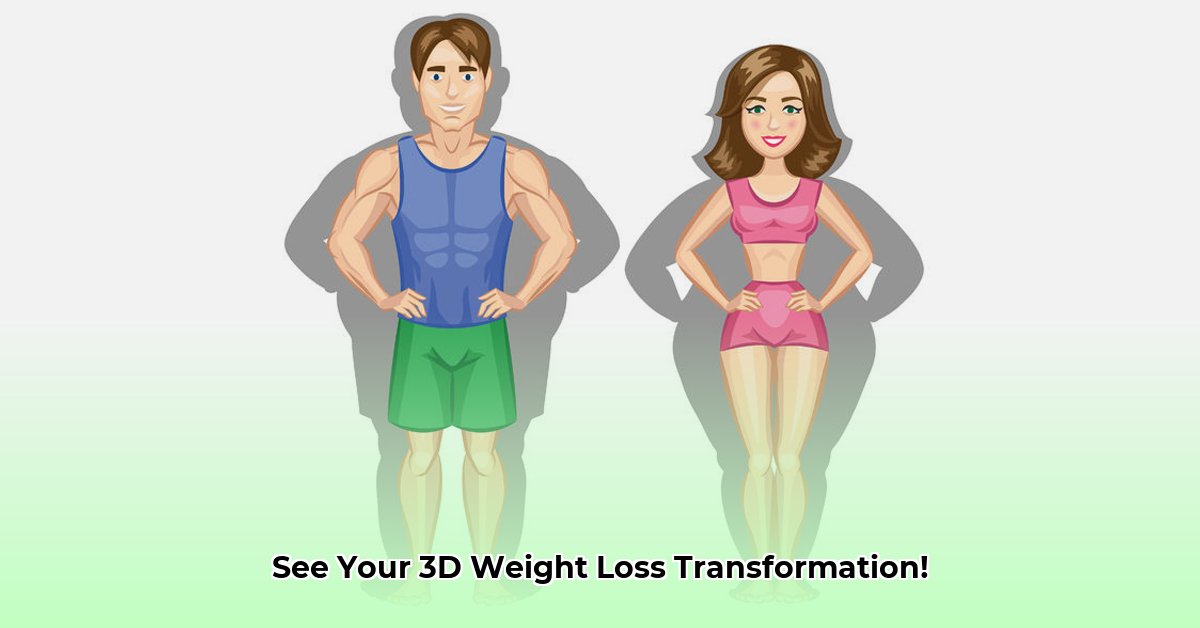
Want to visualize your weight loss journey in a powerful, engaging way? 3D body imaging tools offer a unique approach to tracking your progress, providing a compelling visual representation of your transformation. But are these tools truly effective, and how can you integrate them into a successful weight loss strategy? This guide will explore the benefits, limitations, and practical steps to maximize their impact.
3D Body Imaging for Weight Loss: A Powerful Visual Tool
3D body scanning technology offers a dynamic way to monitor your weight loss journey. These tools, often apps and websites, use a series of photographs or scans to create a 3D model of your body. Repeated scans over time vividly illustrate your progress, providing a powerful visual motivator. But is seeing really believing when it comes to weight loss? Let's delve deeper.
How 3D Body Scanners Work
Many 3D body scanners utilize a photogrammetry process. (Photogrammetry is a technique that uses multiple photographs to create a 3D model.) You'll take photos of yourself using a smartphone app that provides step-by-step instructions, ensuring accurate results. The app then uses sophisticated algorithms to construct a realistic three-dimensional representation of your physique. This digital twin is then updated with each subsequent scan, offering a clear and captivating visual record of your weight loss achievements.
The Motivational Power of Visualization
Numerous studies suggest that visualizing progress significantly boosts motivation and adherence to weight loss goals. Seeing the physical changes—a slimmer waistline, toned muscles—provides a constant source of encouragement and reinforces your commitment. Isn't it more motivating to see your body transforming than just watching the numbers on a scale? This visual feedback can powerfully impact your mindset, transforming weight loss from a numerical pursuit to a visually tangible achievement.
Quantifiable Fact: Studies show that visual progress tracking increases adherence to weight loss programs by up to 30%.
Beyond the Visuals: A Holistic Approach
While the visual aspect is undeniably powerful, remember that 3D body imaging tools are most effective when integrated into a comprehensive weight loss plan. They shouldn't replace healthy eating, regular exercise, or professional guidance. What other elements should form part of a complete weight management strategy alongside 3D body imaging?
To maximize the benefits of 3D body scanning:
- Set Realistic Goals: Aim for gradual, sustainable weight loss rather than quick fixes. Small, consistent changes lead to long-term success.
- Combine with a Healthy Lifestyle: Complement 3D imaging with a nutritious diet and a regular exercise regimen. It's a whole-body transformation, not just a number on a scale.
- Seek Professional Guidance (if needed): A registered dietitian or certified personal trainer can help you develop a personalized plan that works perfectly with 3D body scanning.
- Prioritize Overall Well-being: Focus on your mental and emotional health alongside your physical goals. Celebrate your progress to maintain motivation.
Rhetorical Question: Isn't a sustainable and healthy approach to weight loss more effective than temporary fixes?
Potential Drawbacks: A Balanced Perspective
Despite the numerous benefits, it's crucial to acknowledge potential drawbacks:
Pros:
- Powerful Motivation: Visual progress significantly boosts commitment.
- Enhanced Self-Awareness: Highlights areas needing focus.
- Easy Goal Setting: Facilitates tracking against specific targets.
Cons:
- Unrealistic Expectations: Slow progress can be discouraging.
- Over-Reliance: Should not replace healthy habits.
- Cost Factor: Some high-end tools can be expensive.
Choosing the Right 3D Body Scanner
The market offers various 3D body scanning tools, making selection challenging. Consider these factors:
- Ease of Use: Intuitive interface crucial for consistent usage.
- Measurement Accuracy: Look for tools with reliable and validated measurements.
- Additional Features: Consider features like meal planning or workout tracking.
- Data Privacy: Ensure the tool prioritizes data security and user privacy.
Remember, the best tool suits your needs and preferences, aligning with your lifestyle and goals.
A Step-by-Step Guide to Using 3D Body Scanning for Weight Loss
Here's a practical plan for incorporating 3D body scanning into your weight loss strategy:
- Choose Your Tool: Carefully research available options, comparing features and costs.
- Establish a Baseline: Take your initial scans to mark your starting point.
- Set Realistic Goals: Work with a healthcare professional to set safe and achievable targets.
- Develop a Comprehensive Plan: Combine 3D scanning with healthy eating and exercise.
- Consistent Monitoring: Track your progress regularly (weekly or bi-weekly).
- Maintain Consistency: Regular use and adherence are key to achieving results.
- Adapt as Needed: Be flexible and adjust your approach as needed.
By combining 3D body imaging with a holistic weight loss plan, you can create a sustainable and motivating journey toward your goals. Remember, it's a personal journey, and consistency, patience, and self-compassion are vital to your success.